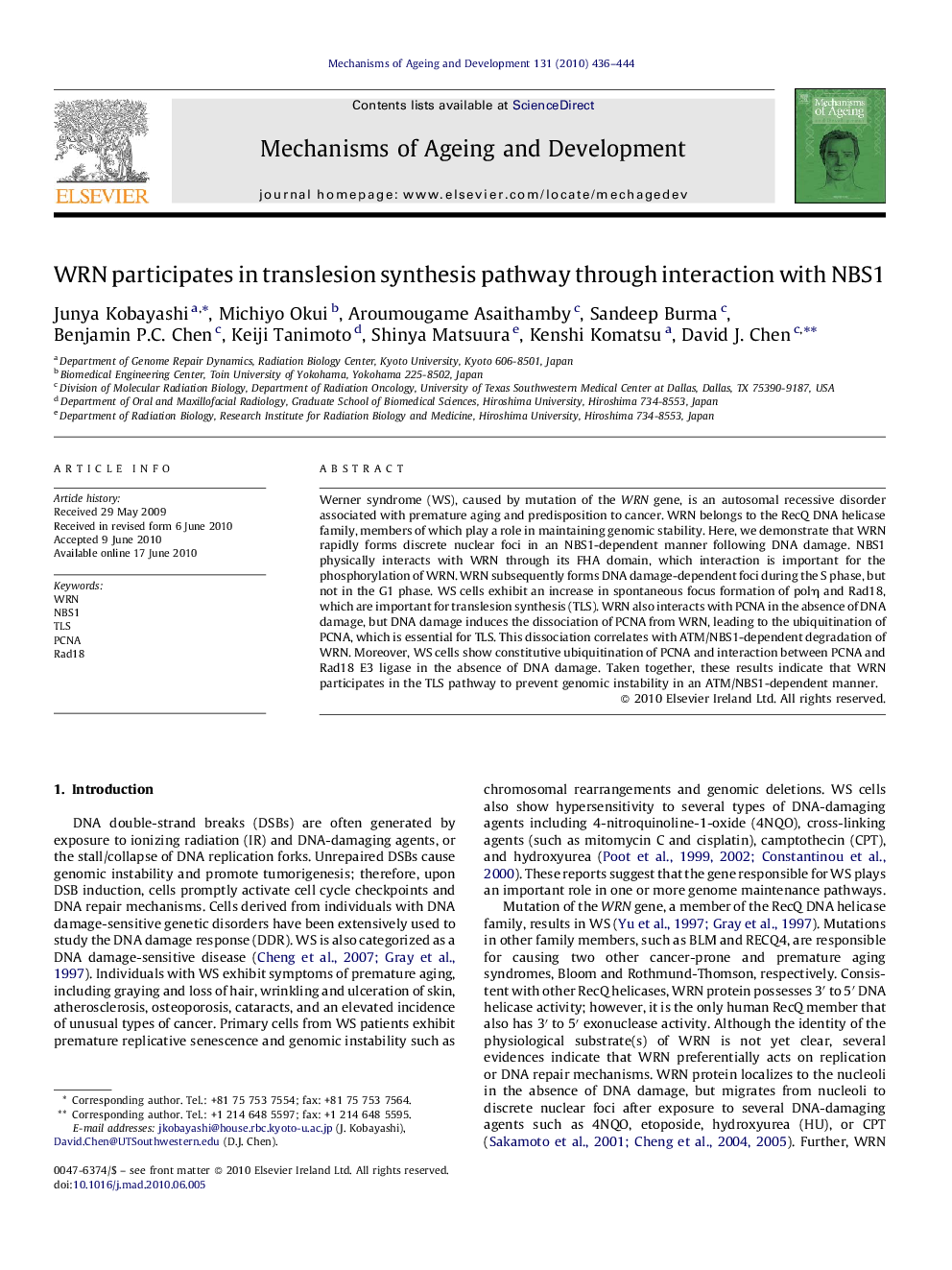| کد مقاله | کد نشریه | سال انتشار | مقاله انگلیسی | نسخه تمام متن |
|---|---|---|---|---|
| 1919493 | 1535644 | 2010 | 9 صفحه PDF | دانلود رایگان |

Werner syndrome (WS), caused by mutation of the WRN gene, is an autosomal recessive disorder associated with premature aging and predisposition to cancer. WRN belongs to the RecQ DNA helicase family, members of which play a role in maintaining genomic stability. Here, we demonstrate that WRN rapidly forms discrete nuclear foci in an NBS1-dependent manner following DNA damage. NBS1 physically interacts with WRN through its FHA domain, which interaction is important for the phosphorylation of WRN. WRN subsequently forms DNA damage-dependent foci during the S phase, but not in the G1 phase. WS cells exhibit an increase in spontaneous focus formation of polη and Rad18, which are important for translesion synthesis (TLS). WRN also interacts with PCNA in the absence of DNA damage, but DNA damage induces the dissociation of PCNA from WRN, leading to the ubiquitination of PCNA, which is essential for TLS. This dissociation correlates with ATM/NBS1-dependent degradation of WRN. Moreover, WS cells show constitutive ubiquitination of PCNA and interaction between PCNA and Rad18 E3 ligase in the absence of DNA damage. Taken together, these results indicate that WRN participates in the TLS pathway to prevent genomic instability in an ATM/NBS1-dependent manner.
Research highlightsWS cells exhibit an increase in focus formation of polη and Rad18. WS cells also show spontaneous ubiquitination of PCNA. PCNA could dissociate from the complex with WRN in an ATM/NBS1-dependent manner. WRN could participate in the TLS pathway through interaction with NBS1 and PCNA.
Journal: Mechanisms of Ageing and Development - Volume 131, Issue 6, June 2010, Pages 436–444